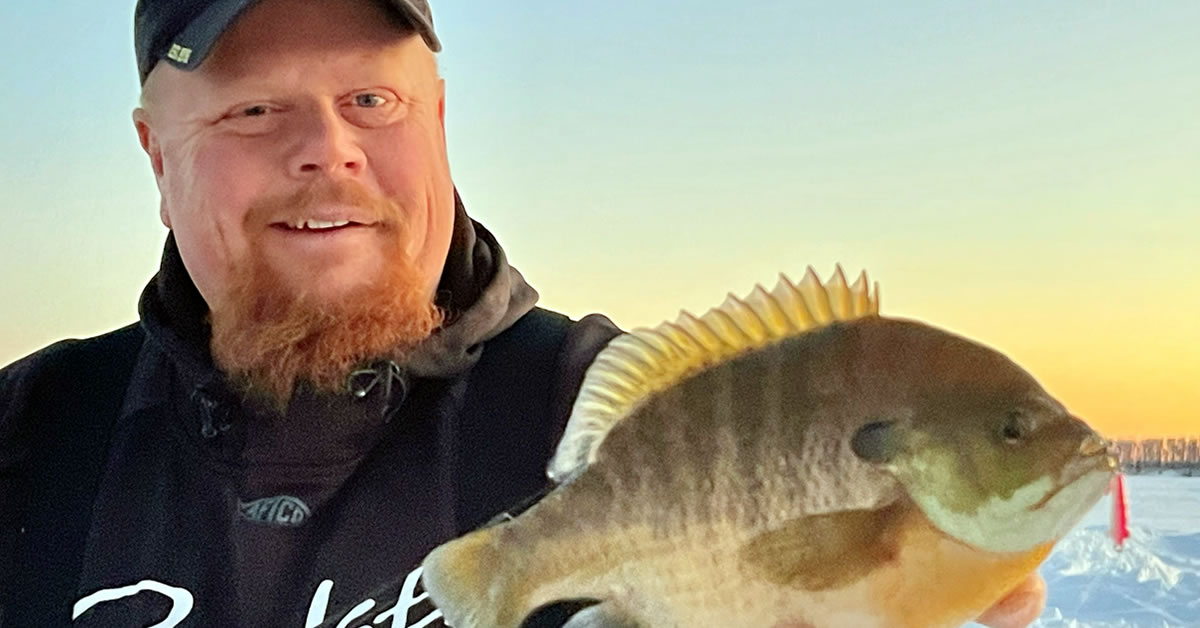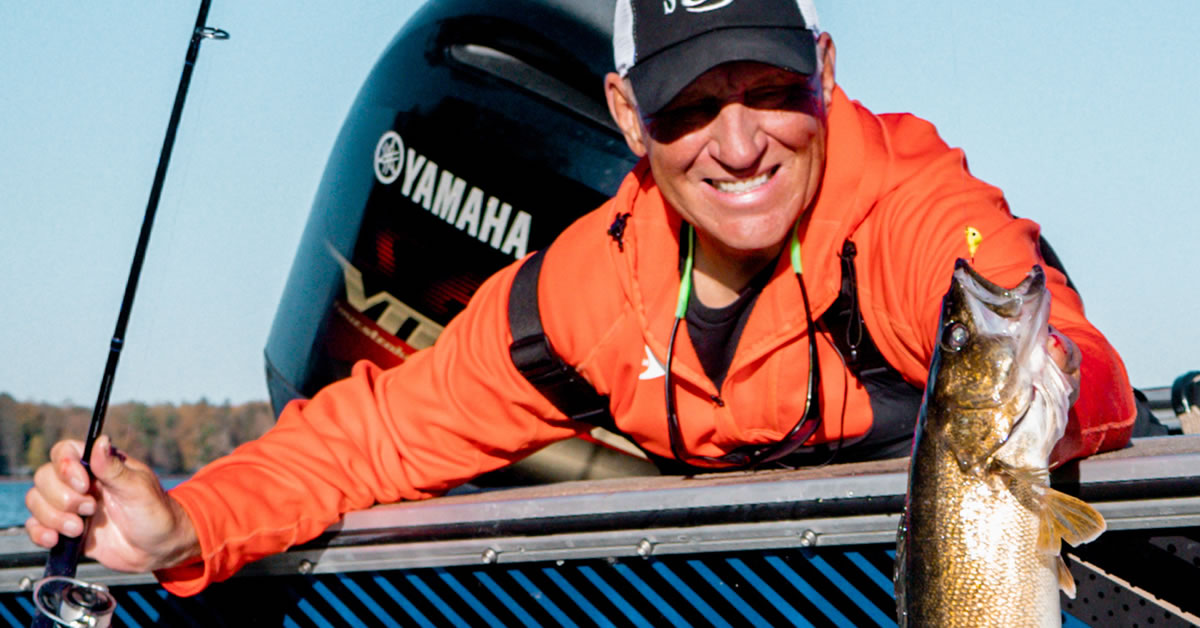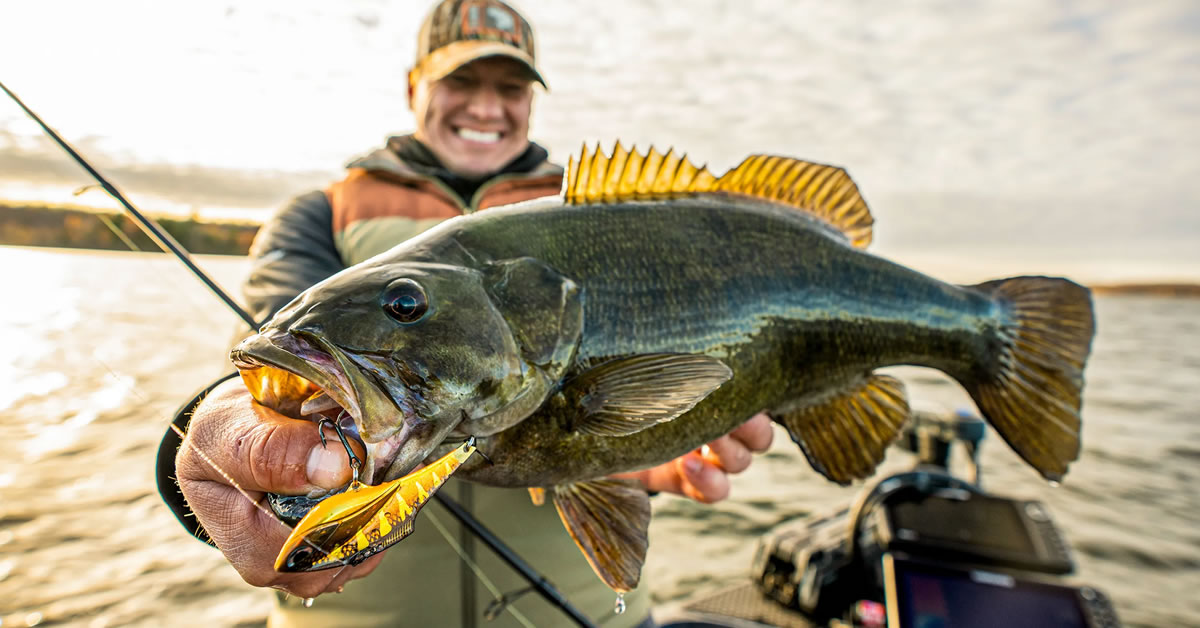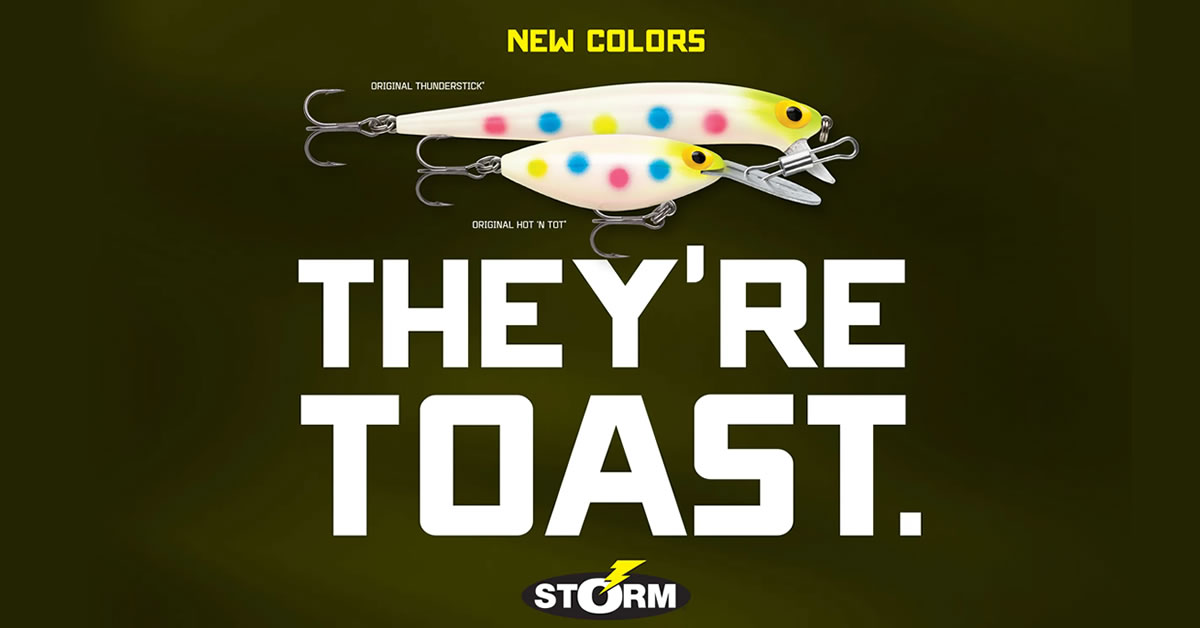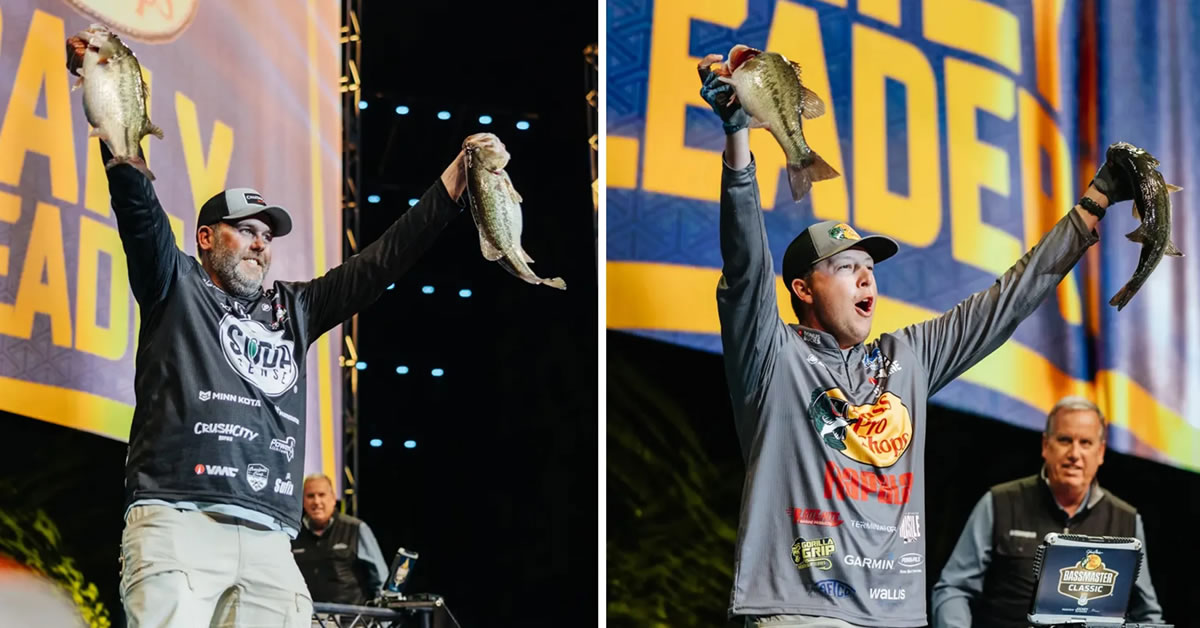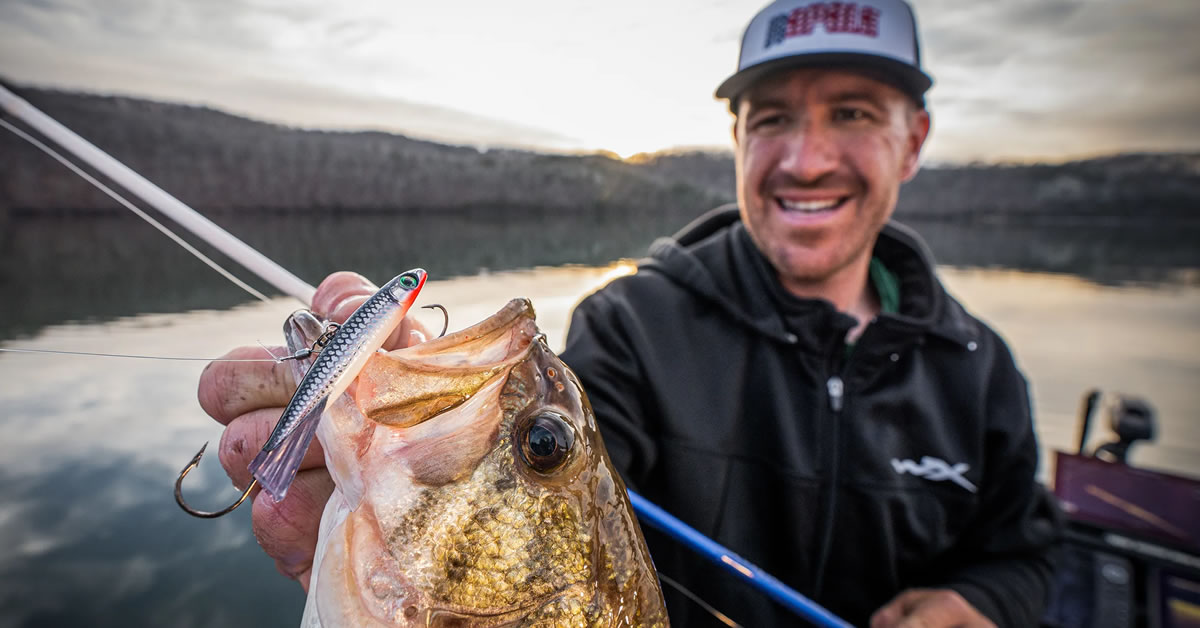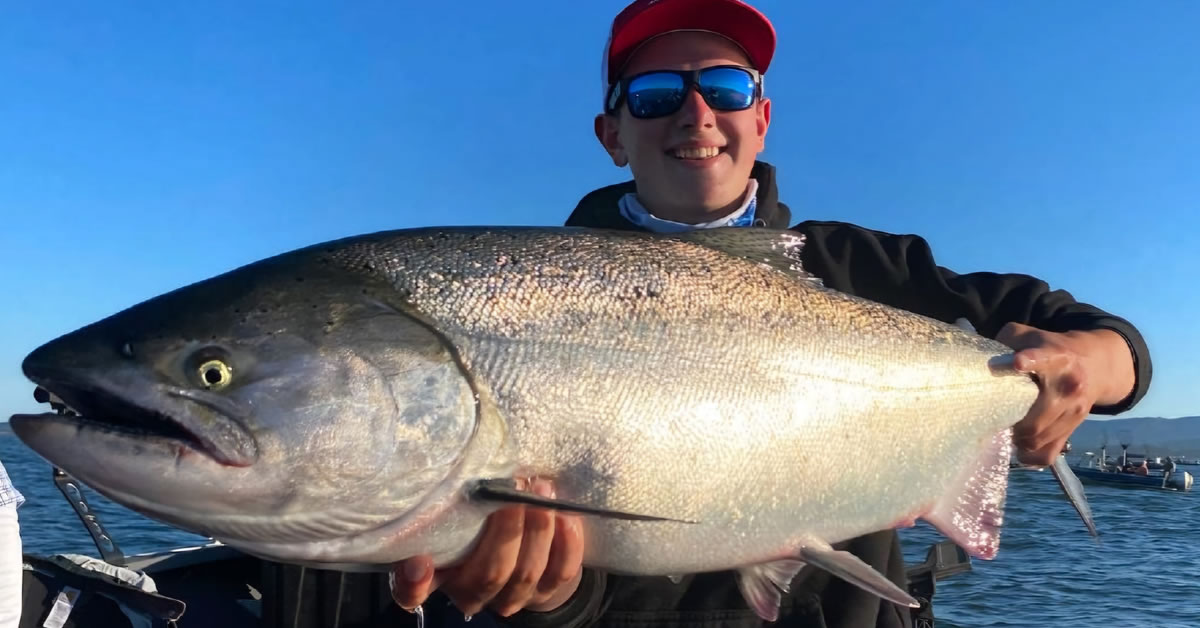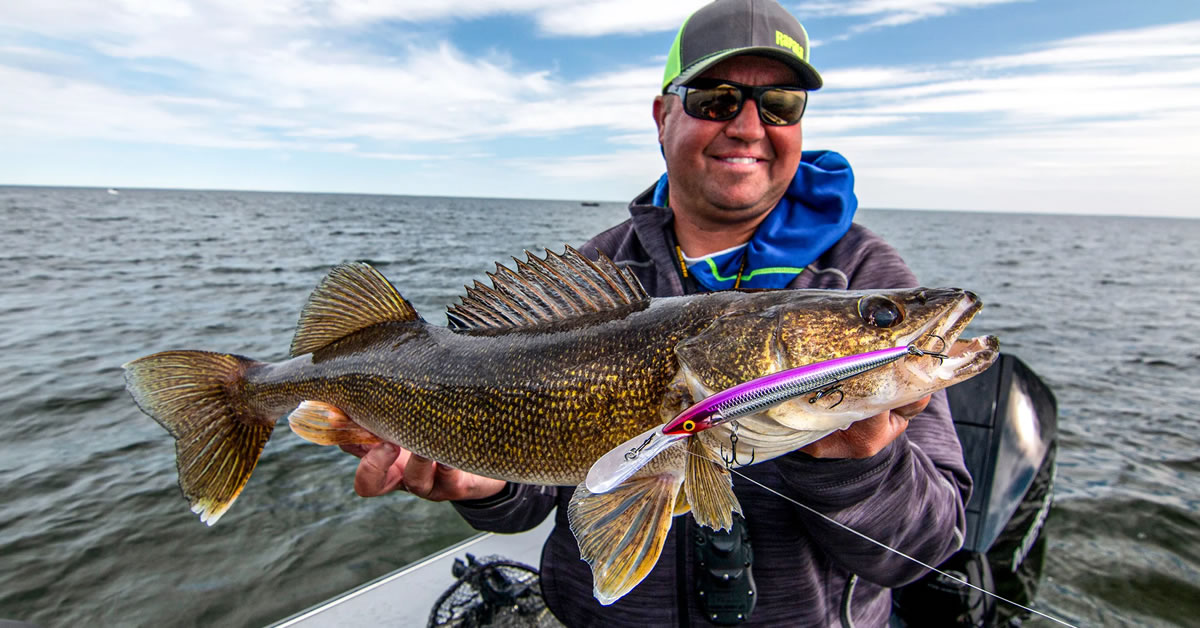Late-Summer, Early-Fall River Smallies
Proven ways to catch more bronzebacks now
by Lake-Link Staff

One angler who spends a good deal of time chasing river smallmouth bass is professional chef and occasional fishing guide Patrick Donelan, former head chef at Wayzata, Minnesota's Blue Point Seafood restaurant. "In terms of fight potential and action, smallmouths are hard to beat, especially in the river current. And late-summer, early-fall is a great time to target them, especially as they start putting on the feedbag. During this time of year, you can catch them a lot of different ways. You just have to find 'em. But it's not as simple as pitching to shoreline structure and mid-river boulders-you've gotta find deeper water and current seams."
Donelan is an all-around sportsman with a knack for finding and catching lots of different species. When it comes to smallies, he says the first thing you need to figure out a river with a good population of fish. "For us, we're kind of spoiled in Minnesota. There are sections of the Mississippi River that offer just spectacular smallmouth bass fishing-and that secret has been out for decades but the majority of in-state anglers still head 'Up North' to chase walleyes and pannies. River smallies aren't high on the list. And then you've got the upper St. Croix and rivers just across the border in Wisconsin. There are almost too many places to fish!"
We've fished sections of the Mississippi from Pool 2 (Hastings north to the Ford Dam in Minneapolis/St. Paul) where you encounter a lot of smaller bronzebacks, but farther north the smallmouth terrain and fish size improves significantly from Monticello, Minnesota, north to Sartell, Minnesota-waters that legendary ice angler Dave Genz has explored and fished the past 40 years. And north of Sartell there are countless pockets of water that get fished even less…
The only problem: the river is generally too shallow to run a standard outboard boat, so you see a lot of anglers in new pedal-driven kayaks, drift boats working downstream, waders, or casting from shore, which can require a lot of hiking to move from spot-to-spot. Still, it's worth it, and provides action pretty much the entire calendar year with a group of diehard smallie anglers who fish the stretch all winter long, downsizing in their presentations and working baits slow for fish that routinely reach-and sometimes exceed-the 20-inch mark. But the best way to fish it - besides running a jon boat with a short-shaft outboard or square-transom canoe with the same, is by jetboat. Enter Donelan's rig.

"I had been looking for a jetboat for years to fish the smaller Minnesota rivers like the Rum, Crow, and offshoots of the Mississippi and St. Croix where you sometimes have to navigate water that's a foot or less. The problem, of course, was justifying the expense of a second boat when I run a multi-species rig on lakes most of the time chasing walleyes, bass, panfish, and running to Canada to fish lakers," says Donelan.
Then, just before the July 4th holiday in 2021, Donelan saw an ad on Craigslist for a used homemade 14-foot jetboat by a seller based out of Red Lake in northern Minnesota. So Donelan and his teenage son drove up to Red Lake-much to wife's chagrin-over the holiday and he was prepared to pay the $1400 posted in the ad based on the photos and description. Once in the vicinity, they drove down a long dirt road lined with old trucks and shacks and finally met the seller, a bearded mountain of a man-but with a great sense of humor and appreciation that they'd driven the distance they did. "I just wanted to see if I could build a jet boat and it worked. Project complete," said the seller, who let them leave with the rig for $1100 given the miles they'd driven to meet up with him and see the boat.
A year into ownership of the rig and Donelan says it's put him on countless fish other people can't reach. "I had to build a deck in the front and back, replace the trailer, but everything in the drive section worked, so I'm really happy with the purchase. Hard to believe the guy build this rig out of a couple old jet-ski's and lots of elbow grease. The boat runs great in really, really skinny water."


"Smallies in late-summer and fall can be hard to find; the key is deeper water. You'll find a fish shallow here or there but my experience has been that the riffles and back eddies behind big boulders and emerging rock piles just don't hold the big fish when the water's down and hitting that 70-degree mark. I run an old Lowrance Elite on the boat for marking waypoints and checking depth-nothing fancy. But with that, I'm able to key in on holes and troughs in mid-river areas where it's hard to read the current above for breaks and riffles and then work those areas with a number of presentations to see if fish are present," says Donelan.
He continues: "Once I find the deeper water I'll distance off downstream with the river anchor and cast the edges with a 4-inch Z-Man Big TRD stick worm rigged weightless Texas-style and let it kind of dance in the current breaks, working it back to the boat with slight pops, zigs, and zags. I particularly like Z-Man's Coppertreuse color, especially when there's some stain to the water. The other thing I'll try is a jerkbait like a 4-inch Rapala X-Rap in silver which runs about 4- to 6-feet when worked back to the boat. So, if the fish are feeding toward the surface, they'll hit the stick worm; suspended in the mid-depths they typically hit the X-Rap, but if I blank on those, I'll grab a long spinning rod like the St. Croix 7' 10" Victory which is a medium-light, extra-fast rod suited to casting small hair jigs like the VMC DM Marabou Jig, small swimbaits, and Z-Man Ned Rigs and give all those presentations a shot. For reels, I like a size 3000 Daiwa Tatula or same size Daiwa Ballistic MQ LT which are amazingly light and with a buttery smooth and super-strong drag. I spool 'em with 10-pound Daiwa J-Braid X8 Grand in dark green to match the river water color and a two-foot section of 10-pound Daiwa Samurai Hidden Concept fluorocarbon which also matches the water and bottom substrate. You really need that abrasion resistance around all the rocks-and hook into a 15- to over 20-inch smallie in the current and you'll be thankful for the added 10-pound strength. I've had fish literally pull my boat downstream even with the river anchor out," laughs Donelan.

Donelan says his last artificial bait to ply these deeper holes and river troughs would be either a Ned Rig or a black marabou jig in the 1/8th- to 1/4-ounce range to work along bottom despite the current. And when all those presentations fail to produce big fish, Donelan turns to the simplicity of the old-guide-proven hook, split-shot, and creek chub, sucker minnow, or shiner combo-whatever's in the local bait-shop's "river mix" for that particular morning. Donelan always picks up a scoop or two on his way to the river as "big fish insurance". If you're coming to the area to try your hand at smallie fishing on the Mississipp, check with Vados Bait in the north Twin Cities metro-they typically have a good selection of river mix, including creek chubs, redtails, shiners, and suckers.
"With live bait-which guys have secretly been fishing for big smallies for decades-the first thing you need to worry about is hooking mortality, especially with these old, big fish. That's why I turn to two specific hooks-a 2/0 Gamakatsu Big River Bait hook or 3/0 VMC Octopus hook-or a circle hook in the same sizes-which pins the majority of the fish in the corner of the mouth. The Gamakatsu Big River Bait hook, especially, is designed with a couple unique angles in the hook shaft that just prevent gut-hooking. Plus, I rig the minnows either through the bottom lip and up through the top or in the mouth and out the back of the head. Doing this seems to hook the smallies in the lip or inside jaw. I don't rig my minnows under the dorsal fin or through the tail," instructs Donelan.
These might seem like big hooks but we're talking big minnows for late-summer through fall smallie fishing-4- to 8-inch monsters of the aforementioned varieties, with creek chubs topping the list of preferred smallie forage. "But there have been times when all I've been able to get are decoy-sized suckers and a 15-inch smallmouth bass has no problem eating a minnow that big. Happens all the time," he says.
With respect to the split-shot live bait rig, Donelan says the St. Croix 7'10" Victory spinning rod loaded with 10-pound braid and 10-pound fluoro leader translates nicely from hair jigs, Neds, and smaller swimbaits to a great live bait drift rod. "It's kind of like fishing steelhead or salmon with spinning rods. Longer is definitely better. With that extra length I can anchor off of a hole or trough downstream, cast up current a ways in front of the boat at the head of a pool or trough and simply let it drift down through the 'money zone'. A lot times your single PSS-3 Water Gremlin Split Shot (second largest split-shot they make) will snag up on a rock and just sit there and then a big smallie will grab the bait off bottom. I position the split-shot anywhere from 6-inches to 18-inches above the hook, depending on where I want the bait positioned off the bottom. Sometimes the fish are bellied right into the bottom; other times, they're feeding up a little bit. I go a little lighter than the Dave Genz Rig, where he positions a ½-ounce clip-on bullet sinker a foot or two up the line. That heavier weight seems to work better in late fall and winter when the fish are definitely stacked along some of the faster current breaks."
Another live bait rig worth giving a shot is a short drop-shot rig, also tied with the same 10-pound braid and 10-pound fluoro leader. First, tie the braid to a 4- to 6-foot section of fluoro with a double-uni or FG knot. Our next recommendation is to choose a hook you don't have to fight-that you don't have to tie directly into the dropper leader and run the tag end through the eyelet to get the hook to stand out perpendicular. Solid hooks are the Gamakatsu G-Finesse Swivel Shot Worm Hook in 1/0 or 2/0-depending on the size of your minnow-or VMC's Spin Shot in the same sizes-both which tie directly to the fluoro dropper leader. Snip your leader roughly in half, attach the top of the hook with the knot of your choice-and with the Gamakatsu, simply slide the bottom of the dropper leader through the pinch point under the hook. With the VMC, you'll have to tie another knot to the swivel end under the hook. No big deal. Then decide if you want your bait a foot or two off the bottom and place two large split shots to the bottom, sometimes with a tag of line trailing down. Don't worry about the tag. The nice thing about using split-shots instead of cylindrical or tungsten drop-shot weights is they're much cheaper and if you get snagged and a split-shot or two comes off in a rock crevice you simply reel in the rest of your drop-shot rig and re-attach new split shots; no losing your whole rig. Simply cast upstream to the head of the pool or trough, let sink to the bottom, and you'll feel a tick-tick of the split-shots on the bottom. If the current isn't racing, you can sit and twitch your rig or simply dead-stick it until you get a bite. With the current a little faster, you'll feel the rig slowly work down river, the weights on the bottom and minnow riding a foot or two above the bottom, presumably in the smallies' feeding zone.
In Conclusion
In this era of forward-facing sonar, Spot-Lock, shallow-water anchors, HD mapping, and more, river smallie fishing can be done pretty simply-and inexpensively. You can even go out and catch your own creek chubs on ice fishing jigs like Dave Genz if you have creeks nearby. As mentioned, a kayak, square-transom canoe, waders, flat-bottom boat with short-shaft outboard, driftboat, or a pair of waders and willingness to hike a bit-or ideally, some kind of makeshift jetboat-will get you places where big smallies live and now is the perfect time of the season with the bite only improving as the water cools and hopefully rises a bit into mid- to late-fall and even winter.A simple graph that displays depth and some kind of GPS to mark fish-holding areas is a must. The other thing you can't forget is a good river anchor with an ample length of rope. You might need to let out 50 to 100 yards of line before the anchor finally catches on a rock and positions the watercraft in the current. And don't forget a pliers or forceps to remove hooks from these precious fish. The other thing? A net, preferably one with an expandable handle for far reaches into the current; these fish-especially your bigger ones-are notorious for running in and out of the current and using that to their advantage. It's not uncommon to fight an 18- to 20-inch smallie for five minutes or more! Talk about fun! Lastly, if you plan on taking some creek chubs, suckers, shiners, or other river mix with as 'big fish insurance', make sure to get the most out of your investment (note: river mix can run anywhere from $7.99 to $14.99 a dozen depending on where you live) by utilizing a quality bait bucket or cooler with aerator. Frabill, Engel, and Mammoth all make quality bait management systems these days-some even roto-molded to keep the water ultra-cold. We've been using a Mammoth Mr. Crappie bait bucket and it'll easily handle a couple dozen big minnows without fatalities, but a smaller, rectangular garage sale cooler with Frabill spray-bar aerator does great, too.
Now get out on the river and enjoy some great smallmouth bass action! Good luck!






